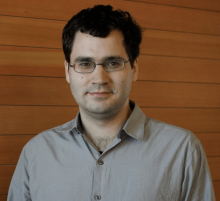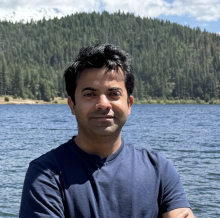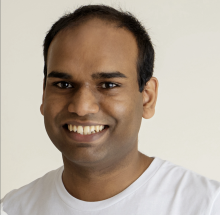Summary
Disclaimer: This summary has been generated by AI. It is experimental, and feedback is welcomed. Please reach out to info@qconsf.com with any comments or concerns.
The presentation by Vinay Chella and Akshat Goel focuses on the development and implementation of a Write-Ahead Intent Log at DoorDash. This innovative approach addresses the complexities of Change Data Capture (CDC) for distributed systems at scale.
Key Concepts:
- Intent-First Design: The system records write intents before the final state is determined, serving as a buffer between data producers and consumers.
- Efficiency: Publishing write intents reduces payload size, lowers coordination overhead, and simplifies processing.
- Performance: Achieving under 1-second tail latencies at up to 1 million writes per second through techniques such as per-key concurrency control and partition-aware retries.
- Maintainability: The use of a Protobuf-based key-value schema allows for versatility across polyglot teams with support for schema evolution.
Main Discussion:
- Challenges with traditional CDC include coupling with database internals and mutation history requirements.
- The introduction of the Write-Ahead Intent Log helps to decouple services, providing loose coupling and enhancing asynchronous integrations.
- Focus is placed on decoupling complexity with the "dumb producer" and "smart consumer", where the producer only logs mutations without determining end states, and the consumer processes these independently.
- Scalability is managed through dynamic traffic reshaping and partition strategies in Kafka.
Conclusion:
- The Write-Ahead Intent Log facilitates high throughput and low latency while avoiding pitfalls such as schema drift and head-of-line blocking.
- The system is designed to evolve with business and technical requirements without being tightly woven into the database's architecture.
This is the end of the AI-generated content.
Abstract
As companies grow, so does the complexity of keeping distributed systems in sync. At DoorDash, we tackled this challenge while building a high-throughput, domain-oriented data platform for capturing changes across hundreds of services.
Instead of relying on traditional Change Data Capture (CDC) mechanisms, we designed a Write-Ahead Intent Log—a lightweight, domain-scoped event stream that records write intents before state is finalized. This intent-first design acts as a durable buffer between writers and downstream consumers, enabling scalable, resilient CDC without tight coupling to database internals or the need for full mutation history.
In this talk, we’ll explore:
- Efficiency: How publishing write intents instead of raw state changes shrinks payload size, reduces coordination overhead, and simplifies downstream processing.
- Performance: Techniques like per-key concurrency control, progressive consistency reads, and partition-aware retries allow us to achieve under 1s tail latencies at up to 1M writes per second per table.
- Maintainability: A Protobuf-based key-value schema abstraction that’s easily consumed by polyglot teams, with built-in support for dead-letter queues, bounded retries, and future-facing features like schema evolution via Proto + schema registry.
We’ll also share how this approach helped us avoid pitfalls like head-of-line blocking and schema drift—without relying on heavyweight infrastructure.
Key Takeaways:
- Intent-First Logging Enables Loose Coupling: By separating write intent from final state, you can decouple services cleanly and unlock asynchronous integrations without overloading databases.
- Throughput and Latency Can Coexist: With the right concurrency controls and retry strategies, it's possible to achieve sub-second latencies even at millions of writes per second per table.
- Simplicity Scales: A domain-scoped, schema-defined log format is easier to evolve and operate than opaque change logs tied to database internals.
Speaker

Vinay Chella
Engineering Leader @DoorDash - Specializing in Distributed Systems, Streaming & Storage Platforms, Apache Cassandra Committer, Previously Engineering Leader @Netflix
Vinay Chella is an Engineering Leader at DoorDash, where he leads the Storage and Streaming Infrastructure organization that powers mission-critical systems across the marketplace. He focuses on building high-leverage, large-scale data platforms, having previously led Netflix’s Online Data Stores and co-invented the Data Gateway platform that supported the majority of Netflix’s online datastore traffic. A long-time Apache Cassandra committer, he has been actively engaged in the community while advancing distributed data systems at scale. At DoorDash, he is shaping the next generation of storage and streaming abstractions through initiatives like Taulu and EventBus, unified data and streaming access layers that enable developers to scale with confidence. He thrives in ambiguous problem spaces, driving rapid innovation and pioneering resilient platforms that balance cost, scale, and velocity.
Find Vinay Chella at:
Speaker

Akshat Goel
Staff Software Engineer, Core Infra at @DoorDash, Previously Senior Software Engineer @Amazon
Akshat Goel is a Staff Software Engineer at DoorDash, where he builds the Storage Access Platform, a unified abstraction layer powering all online data stores. He currently co-leads initiatives like Taulu, a Table-as-a-Service system that provides developers with scalable and reliable storage primitives. Previously, Akshat worked at Amazon on AWS Timestream, focusing on ingestion systems, developer SDKs, rate limiting, and encryption solutions. His passion lies in designing developer-friendly platforms that abstract away the complexity of large-scale distributed systems.







